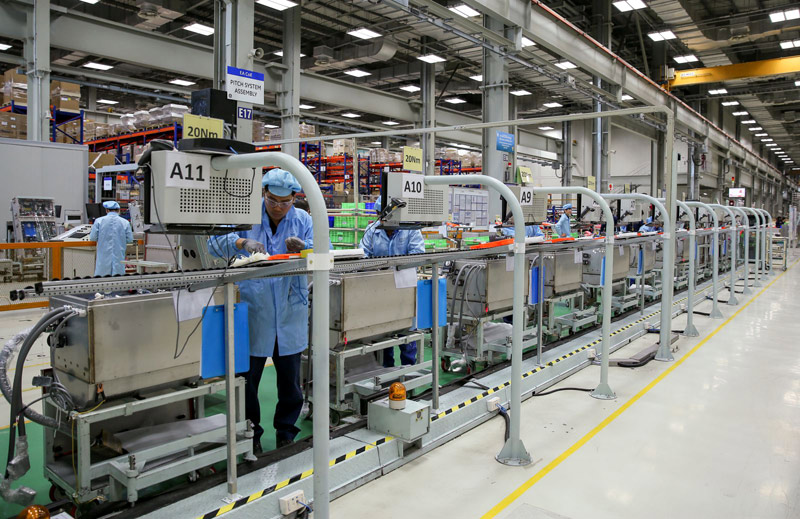January-July FDI disbursement climbs to US$10.5 billion
Total FDI commitments to Vietnam stood at US$16.7 billion in seven months.
Disbursement of foreign direct investment (FDI) to Vietnam rose by 3.8% year-on-year in the January-July period to US$10.5 billion, a report of the Foreign Investment Agency (FIA) under the Ministry of Planning and Investment has shown.
| Production at General Electric in Haiphong. Photo: Le Sang |
While the actual FDI inflows remain positive, the serious Covid-19 situation led to a 37.9% decline in the number of fresh projects to Vietnam but registered capital rose 7% inter-annually to US$10.13 billion.
The report also noted 561 existing projects have been injected an additional US$4.54 billion, down 9.4% in number and 3.7% in the capital.
During this period, 2,403 projects had over US$2.05 billion in capital contributed by foreign investors, down 46.1% in the number of projects and 55.8% in value year-on-year.
Economists suggested Vietnam’s prospect of FDI attraction would continue to be affected by the pandemic. A recent survey conducted by the European Chamber of Commerce in Vietnam (EuroCham) suggested European businesses sentiment has declined due to the fourth Covid-19 outbreak in Vietnam.
The outlook, however, remains bright as Co-Head of HSBC’s Asian Economic Research Frederic Neumann said Vietnam is one of the two standout economies in Southeast Asia that is able to capture new supply chains moving near.
In fact, among 18 fields and sectors that have received foreign capital during the period, manufacturing and processing led the pack with investment capital of nearly US$7.9 billion, accounting for 47.2% of total registered capital. Electricity production and distribution came second with US$5.49 billion, or 32.8%, followed by real estate with US$1.16 billion.
FIA’s report added that out of 86 countries and territories having projects in Vietnam in the first seven months of the year, Singapore took the lead with US$5.92 billion, or 35.4% of the total registered FDI for new projects, followed by Japan with US$2.54 billion, or 15.2% and South Korea with US$2.2 billion or 13.1%.
Among 57 cities and provinces having received FDI in the January-July period, the southern province Long An has attracted the largest portion of capital commitments with US$3.58 billion, or 21.4% of the total. Ho Chi Minh City came second with nearly US$1.78 billion (10.7%), followed by the southern city of Binh Duong with US$1.33 billion (8%).
As of present, Vietnam is home to 33,967 valid foreign investment projects with a combined registered capital of US$399 billion, while the disbursed amount stood at US$242.36 billion, or 60.7% of the committed amount.
| Big-ticket projects in January-July include the Long An liquefied natural gas (LNG) power plant project worth US$3.1 billion from Singaporean investors; Japanese US$1.31-billion O Mon II thermal power plant; an additional injection worth US$750 million into LG Display Haiphong from South Korean investors; a tire manufacturing plant in the southern province of Tay Ninh with an additional fund of US$312 million; and Kodi New Material Vietnam manufacturing plan from Singaporean investor worth US$270 million to make tablets and laptops in the northern province of Bac Giang. |











